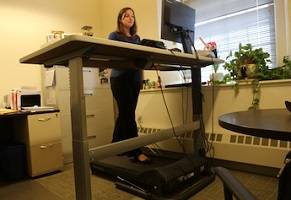April 17, 2013
Office design goes to the movies. Part 8 – Brazil
[embedplusvideo height=”146″ width=”210″ standard=”https://www.youtube.com/v/mS5WLkb_Cxk?fs=1″ vars=”ytid=mS5WLkb_Cxk&width=210&height=146&start=&stop=132&rs=w&hd=0&autoplay=0&react=1&chapters=¬es=” id=”ep3153″ /]
A prescient film when it comes to modern office life, the workplace depicted in Terry Gilliam’s Brazil is that particularly 1980s modish mish-mash of futuristic technology and grubby antique with more than a nod to the offices of the past, present and future. Nevertheless he was able to anticipate both the current obsession with shared desks, the battle for resources and space (above) and the fact that people will sometimes use technology to do anything other than work so long as the boss doesn’t notice (below). Even the exposed pipes that were once so daring can now seem a routine or even hackneyed element in an office design.












 Amidst all the controversy over flexible working raised by the infamous Yahoo homeworking ban comes US research revealing homeworking policies lead to happier employers and employees. 93 percent of employees surveyed by
Amidst all the controversy over flexible working raised by the infamous Yahoo homeworking ban comes US research revealing homeworking policies lead to happier employers and employees. 93 percent of employees surveyed by 








April 10, 2013
What the CIFF 2013 show taught us about workplaces in China
by Mark Eltringham • Comment, Flooring, Furniture, Workplace design